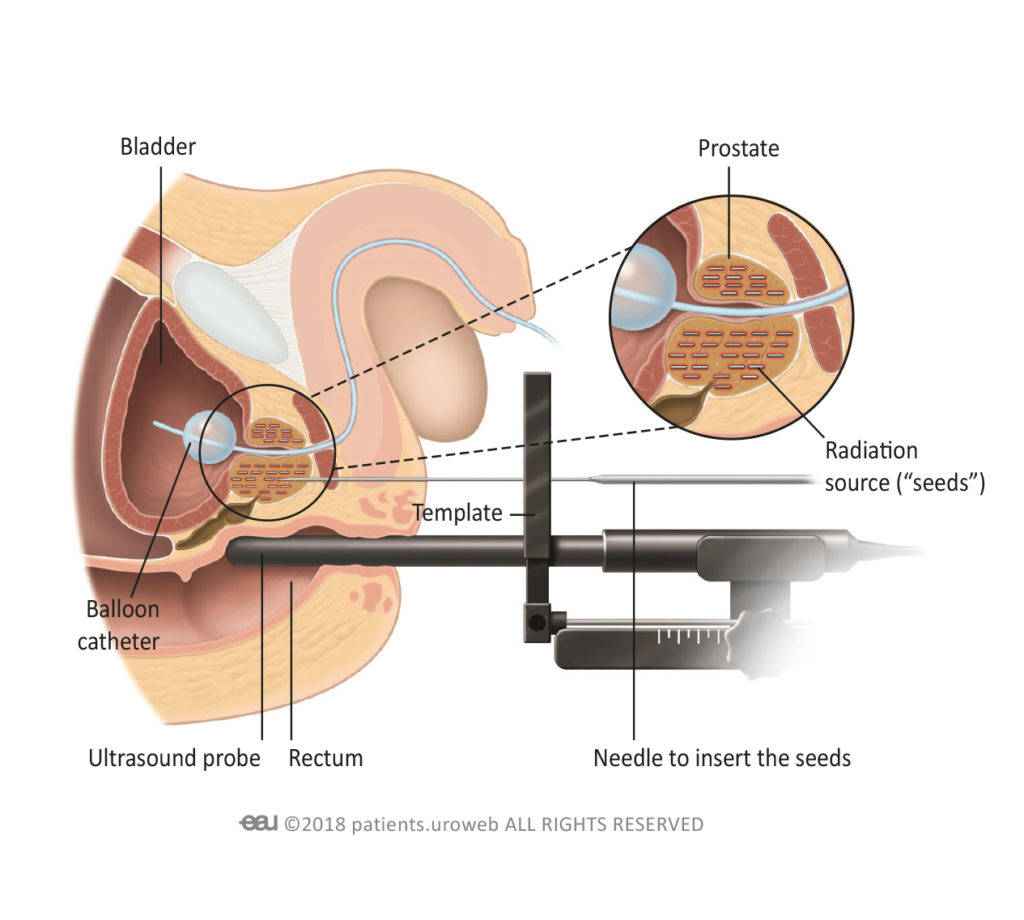1. external beam radiotherapy
2. brachytherapy
Radiotherapy treatment is painless, but there are side effects caused by both types of treatment that may cause you problems. Your doctor will discuss your options and the potential side effects with you.
External beam radiotherapy
External beam radiotherapy uses a machine, called a linear accelerator, or LINAC, to give the radiation treatment from the outside of the body. Using the machine, the radiographer can direct the treatment to an exact point on your body. The aim is to destroy the cancer cells inside your body without damaging healthy tissue or organs. External beam therapy is often given in addition to other prostate cancer treatments, particularly hormone treatments (also called Androgen Deprivation Therapy or ADT).
Before you have external beam radiotherapy, you will need a CT scan. The results will help the radiographer work out the exact point and dose of radiotherapy. A permanent mark will be made on your skin to ensure the radiation beam is directed to the same position at every treatment session.
Brachytherapy
Brachytherapy is a radiation treatment given from the inside of the body. Small, radioactive metal pieces, commonly referred to as “seeds,” are inserted directly into the prostate under a general anaesthetic. Radiation is slowly released from the seeds over a few months. The radiation destroys the cancer cells inside the prostate, but it limits radiation that reaches the nearby tissues and organs. Your doctor will discuss any concerns you might have about radiation and advise on modern techniques to reduce this risk.
During the procedure, an ultrasound probe will be passed into your back passage (rectum). This helps the doctor work out how many seeds to inject into the prostate and exactly where they should be placed. The stage of your cancer will determine the dose of radiation your doctor advises.
Having brachytherapy



